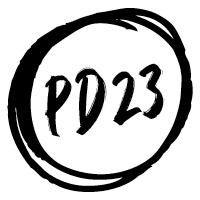PD · Data Science · Analytics · Interview · I
What’s Hidden in your CRM? A PD2023 Preview on Text Mining
By John Hermans | August 10, 2023
 Text mining is the practice of exploring large collections of unstructured textual data to discover valuable information, patterns and trends. We spoke with Matt Farrow to preview his presentation at Prospect Development 2023 (PD2023) on this fascinating area of data science and its applications to fundraising.
Text mining is the practice of exploring large collections of unstructured textual data to discover valuable information, patterns and trends. We spoke with Matt Farrow to preview his presentation at Prospect Development 2023 (PD2023) on this fascinating area of data science and its applications to fundraising.
Tell us a little about your career in prospect development, and your path to your current director role at Children’s Medical Center Foundation.
My background is in theatrical production — specifically lighting and carpentry. I loved what I did, but 14–16 hour days weren’t conducive to a healthy family life. A pivot to special events catered to several of my strengths, but I quickly learned that soliciting sponsorships and managing volunteers wasn’t my forte.
As fate would have it, I interviewed for a researcher position with Apra member Sarah Daly at Southern Methodist University (SMU). Sarah is a former theatrical stage manager who understood what I brought to the table and graciously took a chance on me.
In 2021, after eight years at SMU, I was wrapping up my master's degree in data science and thinking about the next challenge. This led me to the Children’s Medical Center Foundation, which supports the Children’s Health pediatric hospital in Dallas. In my time there, I’ve written a keyword search for a gift planning benchmarking survey, which sparked interest from colleagues at other pediatric hospitals. This inspired me to develop the PD2023 workshop I’ll present later this month.
Text mining and analysis is being used in many industries and professions. In your opinion, what is the single most important benefit that text mining projects can bring to a fundraising operation and support successful major gift fundraising?
Contact reports are the largest source of free text in many of our databases, and they offer a unique opportunity to bring nuance and insight to fundraiser performance. You might find that an incredibly successful officer always ends their reports with a next action, or that an underperforming officer writes, on average, contact reports of fewer than 100 words. Those nuggets highlight fundraiser activity and performance that more traditional measures can’t easily capture.
How is text mining related to artificial intelligence (AI) and natural language processing (NLP)? In other words, what kind of technical skills and knowledge do we need to have to pursue text mining projects?
In my mind, text mining is extracting useful information from text, whereas NLP is concerned with understanding what the language is saying. For example, if we were to look at an academic paper, text mining could tell us the frequency of words and phrases, but NLP, like ChatGPT, could summarize the article for you or identify the topics discussed. NLP requires a deep understanding of language in addition to the necessary technical skills, whereas text mining will be much more accessible for most people.
Amidst all of our other pressing and daily work demands, choosing a text mining project that will have real and immediate impact on our work can be difficult. What’s your No. 1 recommendation for those looking to select a pilot project?
Look for a small win. Don't try to build an in-house large language model for your first project; think about questions someone might ask you about the data. Recently, I was asked to create an Excel formula to flag contact reports that mention terms like “attorney” or “estate” for our gift planning team. Other than a bit of work to write the correct formula, it was an easily implemented fix that saved the team the chore of going through every contact report line-by-line.

John Hermans
Executive Director of Prospect Management & Advancement Research, University of Toronto
John Hermans is executive director of prospect management and advancement research at the University of Toronto, and a former board member of the Apra Canada chapter.